Introduction to Motorcycle Jump Starters
A motorcycle jump starter is a portable device designed to revive a dead motorcycle battery without needing a second vehicle. It stores energy in a built-in lithium-ion or lithium-polymer battery, delivering a direct power boost to restart engines. Unlike traditional jumper cables—which require connecting to another car’s battery—this tool offers independence and convenience for stranded riders.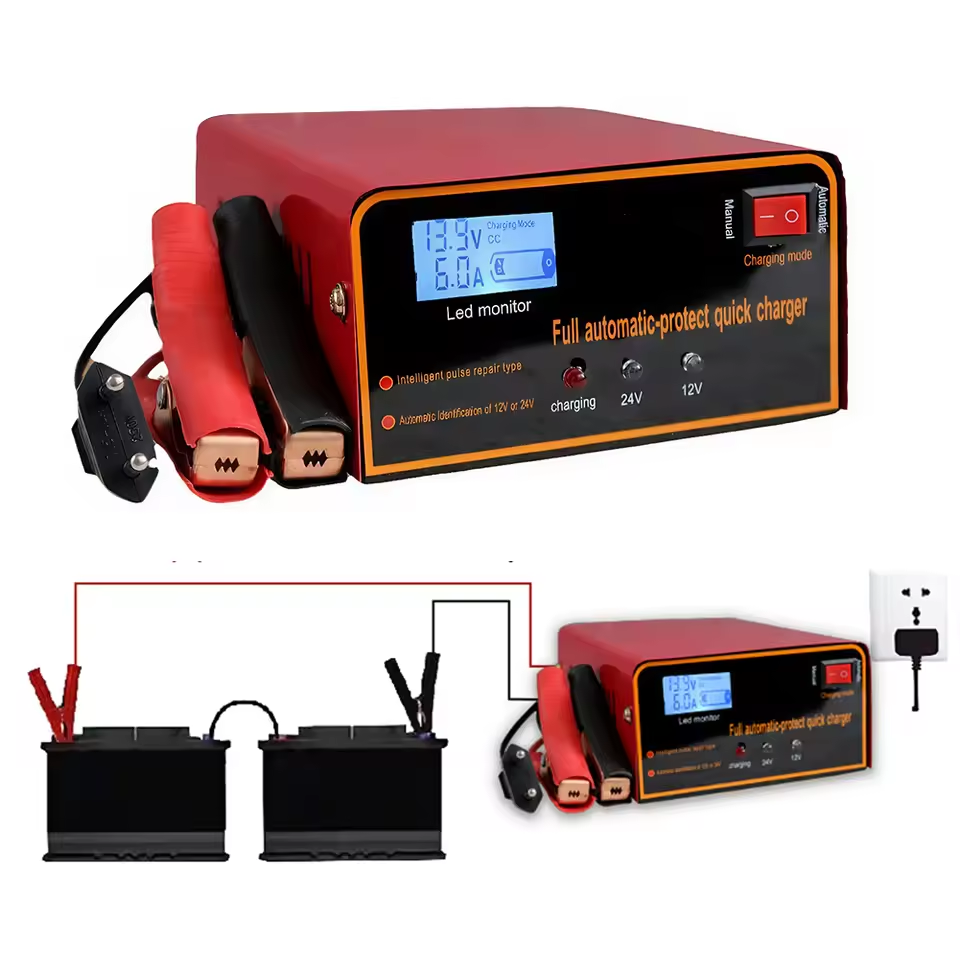
Key features include auto-sensing technology to detect battery voltage, preventing overcharging, and safety protections like reverse-polarity alerts to avoid electrical damage. Compact and lightweight, modern models often double as USB chargers for smartphones or GPS devices, making them versatile for everyday use.
Ideal for cold starts, forgotten lights, or aging batteries, a motorcycle jump starter is essential for both urban commuters and off-road adventurers. It ensures riders can quickly resolve battery failures on the go, minimizing downtime and roadside stress. With capacities ranging from 12,000 to 30,000 mAh, these tools cater to various motorcycle types (typically 12V systems), making them a must-have for any rider’s emergency kit.
Key Features of a Reliable Motorcycle Jump Starter
A motorcycle jump starter relies on several core features to ensure reliability and safety during emergencies. Below are the most critical aspects to consider:
1. High-Capacity Battery
The heart of any reliable device is its battery. Lithium-ion or lithium-polymer cells are preferred for their lightweight yet powerful storage. Look for models with capacities between 12,000 mAh to 30,000 mAh, which allow 5–10 jump cycles for motorcycles (depending on battery size). Higher capacities also enable slower trickle charging to revive deeply discharged batteries without straining the device.
2. Safety Protectors
Quality starters prioritize user and equipment safety:
- Reverse-Polarity Protection: Alerts if clamps are accidentally attached to the wrong terminals.
- Overload/Short-Circuit Protection: Cuts power during unsafe conditions to prevent explosions or fires.
- Temperature Control: Monitors internal heat to avoid overheating during prolonged use.
These features are critical for protecting both the motorcycle’s electrical system and the rider.
3. Voltage and Compatibility
Most motorcycles use 12V batteries, so ensure the starter supports this voltage. Advanced models auto-sense battery type, while others require manual selection (e.g., 6V for vintage bikes). Check the peak current output (typically 300A–800A) to match your bike’s cranking requirements—a higher amp rating handles larger engines or cold starts more effectively.
4. Portability and Ergonomics
A compact, lightweight design ensures easy storage in saddlebags or pockets. Look for models under 1 kg (2.2 lbs) with ergonomic grips or straps. Some include LED flashlights or USB ports for added utility, such as charging GPS devices during a breakdown.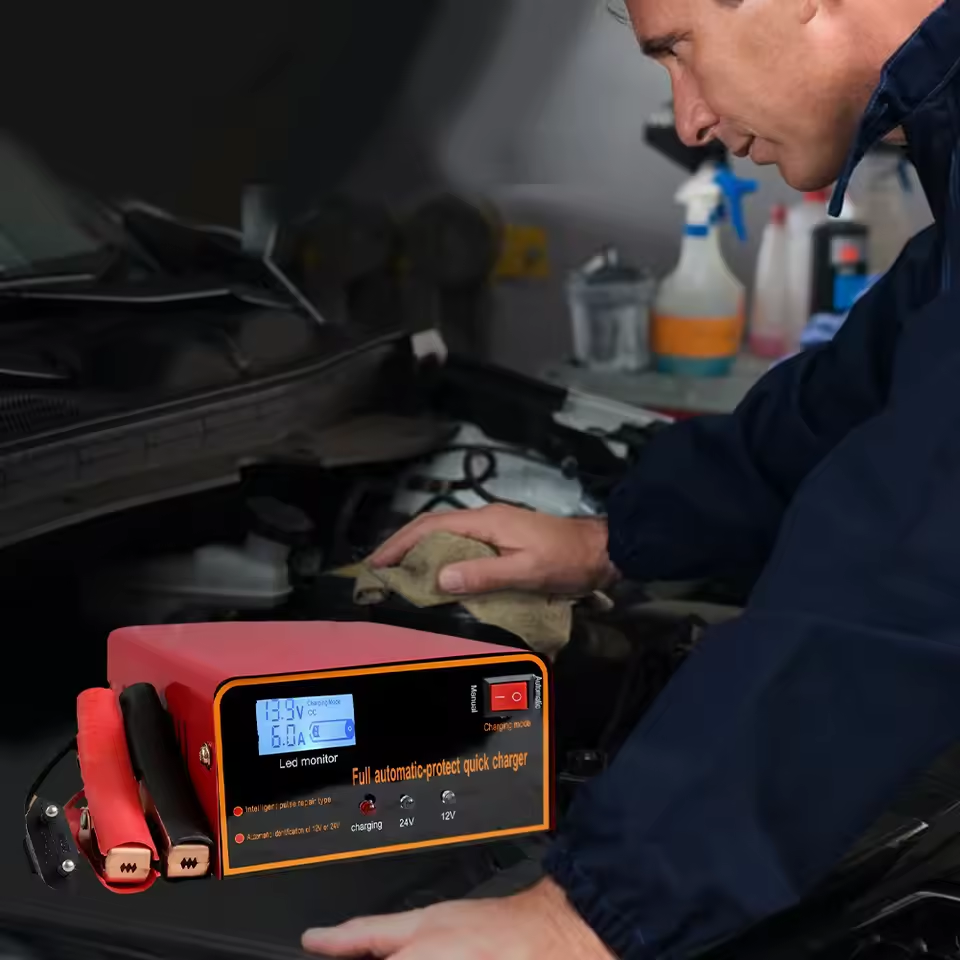
5. Durability and Build Quality
Invest in devices with rugged casings to withstand drops or rough handling. Reinforced clamps and corrosion-resistant terminals extend longevity, especially in humid or dusty environments.
6. Additional Smart Features
Modern starters may include:
- Digital Voltage Displays: Show battery health before and after jumps.
- Trickle-Charging Modes: Slowly restore weak batteries to prolong their lifespan.
- Compatibility with Cars: Dual-use models work for motorcycles and cars, maximizing value.
By prioritizing these features, riders can choose a best motorcycle starter that balances power, safety, and convenience—ensuring readiness for any roadside emergency.
Choosing the Right Motorcycle Jump Starter: A Buyer’s Guide
Selecting the right motorcycle jump starter requires evaluating your needs against key specifications. Follow this guide to make an informed decision:
1. Determine Your Power Requirements
- Battery Capacity (mAh): A 12,000–20,000 mAh unit suffices for small motorcycles, while larger bikes (e.g., touring or dual-sport) need 25,000 mAh+.
- Peak Current (Amp): Aim for 300A–800A output. Higher amps (≥500A) ensure reliable starts in cold weather or for engines with high cranking resistance.
2. Check Compatibility
Ensure the starter matches your motorcycle’s battery voltage (12V for most modern bikes). Dual-voltage models are ideal for vintage or diverse vehicle collections. Verify clamps fit your battery terminals—some designs require adapters for odd-shaped connectors.
3. Prioritize Safety Features
- Reverse-Polarity Alerts: Essential to prevent terminal misconnections.
- Overload Protection: Guards against short circuits or incorrect usage.
- Auto-Sensing Technology: Automatically adjusts power output based on battery health.
4. Consider Portability and Design
Opt for devices weighing under 1 kg (2.2 lbs) with ergonomic grips or mounting straps. Compact sizes fit easily into saddlebags. Models with LED flashlights or USB ports add versatility for emergencies or navigation.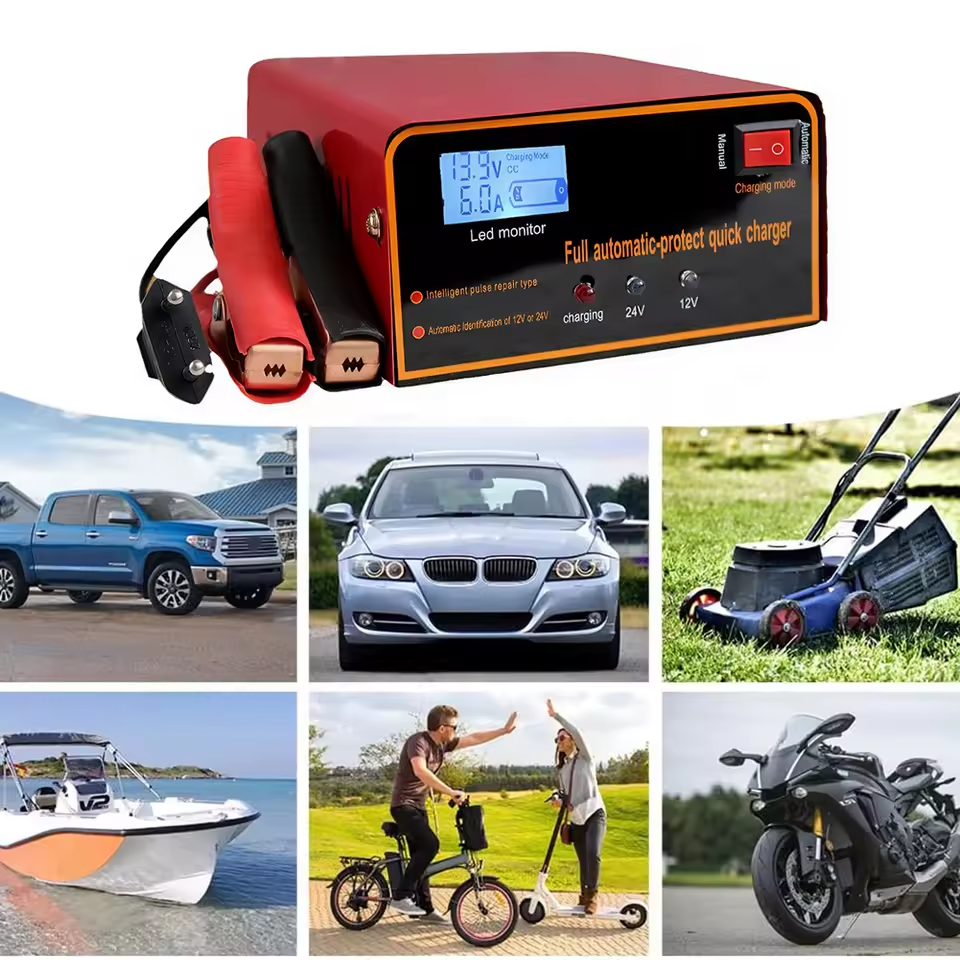
5. Budget and Brand Reliability
- Entry-Level (30–60): Basic models with sufficient amps for small bikes but limited features.
- Mid-Range (60–120): Include safety features, higher capacities, and multi-tool functions.
- Premium ($120+): Top brands like NOCO Boost or TACKLIFE offer ultra-durable builds, high amps, and smart diagnostics.
6. Read Reviews and Warranty
Look for models with 2–3 year warranties and check reviews for reliability under real-world conditions. Avoid overly generic brands with sparse feedback.
By aligning these factors with your riding style and budget, you’ll select a motorcycle jump starter that delivers peace of mind on every ride.
How to Use a Motorcycle Jump Starter Safely
Using a motorcycle jump starter requires precision to avoid electrical hazards. Follow these steps for safe operation:
1: Prepare the Motorcycle
- Turn off the ignition and ensure all lights/switches are off.
- Inspect the battery for corrosion or cracks. Clean terminals with a wire brush if needed.
2: Connect the Cables Correctly
- Attach the red (positive) clamp to the motorcycle’s positive battery terminal.
- Connect the black (negative) clamp to an unpainted metal surface (e.g., a bolt or frame) away from the battery. Avoid connecting directly to the negative terminal to prevent sparks near battery gases.
- Turn on the jump starter and select the correct voltage (typically 12V for motorcycles).
3: Start the Engine
- Hold the ignition key and crank the engine. If it doesn’t start within 5–10 seconds, release and wait 1–2 minutes before retrying. Overloading the device risks damage.
- After successful ignition, let the engine run for 5–10 minutes to recharge the battery partially.
4: Disconnect Safely
- Turn off the jump starter.
- Remove clamps in reverse order: black (negative) first, then red (positive).
Important Safety Tips
- Never touch metal clamps to each other or to skin while powered.
- If the battery is severely damaged (e.g., leaking), replace it instead of jumping.
- Store the device dry and at room temperature between uses.
By following these steps, riders can safely revive dead batteries without risking electrical fires or component damage.
Common Misconceptions About Motorcycle Jump Starters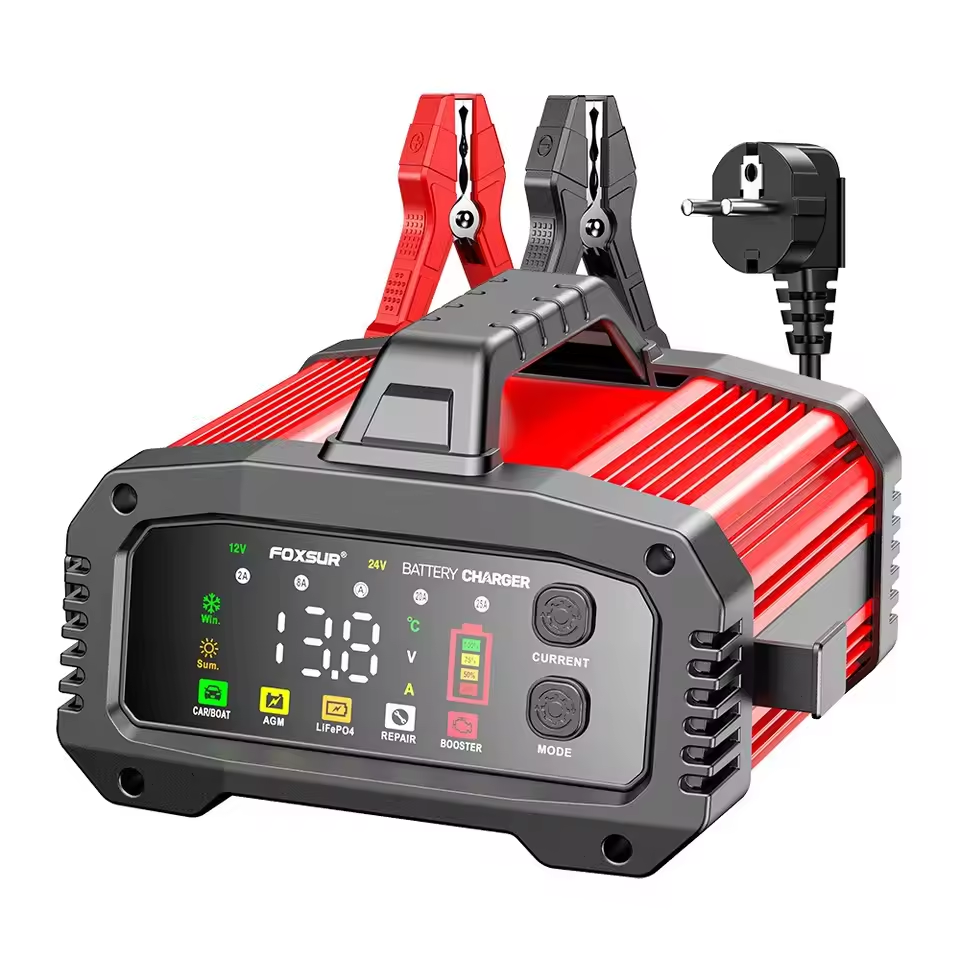
Many riders misunderstand how motorcycle jump starters function, leading to unsafe practices or wasted investments. Here are key myths debunked:
“They Only Work for Dead Batteries”
Fact: Most starters can also trickle-charge weak batteries. Look for devices with a low-power mode to gently restore charge over time, prolonging battery life.
“All Jump Starters Are the Same”
Fact: Performance varies widely. A 1,000 mAh device won’t jump a 500cc bike, while a 30,000 mAh unit may overheat smaller batteries. Always match capacity to your motorcycle’s requirements.
“You Don’t Need to Turn Off the Bike”
Fact: Ignition must be off during connection to prevent electrical spikes. Accidentally cranking the engine while clamps are attached risks short-circuiting the system.
“They’re Just for Emergencies”
Fact: Many starters double as USB power banks, LED flashlights, or voltage testers. Use them daily to charge gadgets or monitor battery health.
“No Maintenance Required”
Fact: Neglecting care shortens lifespan. Recharge the internal battery every 3–6 months to prevent capacity loss. Clean terminals and store it dry to avoid corrosion.
“Voltage Doesn’t Matter”
Fact: Most motorcycles use 12V systems, but older models (e.g., some vintage bikes) may require 6V settings. Using mismatched voltage can damage electronics.
By addressing these misconceptions, riders can use motorcycle jump starters effectively and safely, turning them into indispensable tools rather than overlooked accessories.
Pairing with Other Emergency Tools for Comprehensive Safety
A motorcycle jump starter is just one piece of a complete emergency toolkit. Pair it with these items to handle diverse roadside challenges:
1. Portable Air Compressor
Tire punctures are common, so a compact compressor lets you reinflate tires quickly. Look for models with gauge integration to avoid over-inflation.
2. Reflective Warning Triangle/LED Beacon
Place a high-visibility triangle or flashing LED light behind your bike to alert oncoming traffic during breakdowns. This reduces accident risks while you work.
3. Multi-Tool or Swiss Army Knife
Carry a rugged multi-tool with pliers, screwdrivers, and blade for minor repairs—loosening bolts, adjusting chains, or cutting paracord.
4. Compact First-Aid Kit
Include bandages, antiseptic wipes, pain relievers, and blister patches to address cuts, blisters, or muscle strains until help arrives.
5. Waterproof Emergency Blanket
A lightweight thermal blanket protects against extreme temperatures (hot or cold) while waiting for assistance.
6. USB-Powered GPS or Satellite Communicator
Pair your motorcycle jump starter’s USB ports with a GPS device or satellite messenger to share your location during remote breakdowns.
7. Spare Fuses and Electrical Tape
Electrical faults can mimic battery issues. Keep spare fuses and tape to bypass minor wiring problems temporarily.
Smart Storage Tips
- Use a waterproof rollable bag to organize tools in saddlebags.
- Group items by priority: Jump starter + warning triangle go front-and-center.
By combining these tools with your motorcycle jump starter, you create a system that addresses battery failures, mechanical issues, and safety hazards—all while staying connected and visible.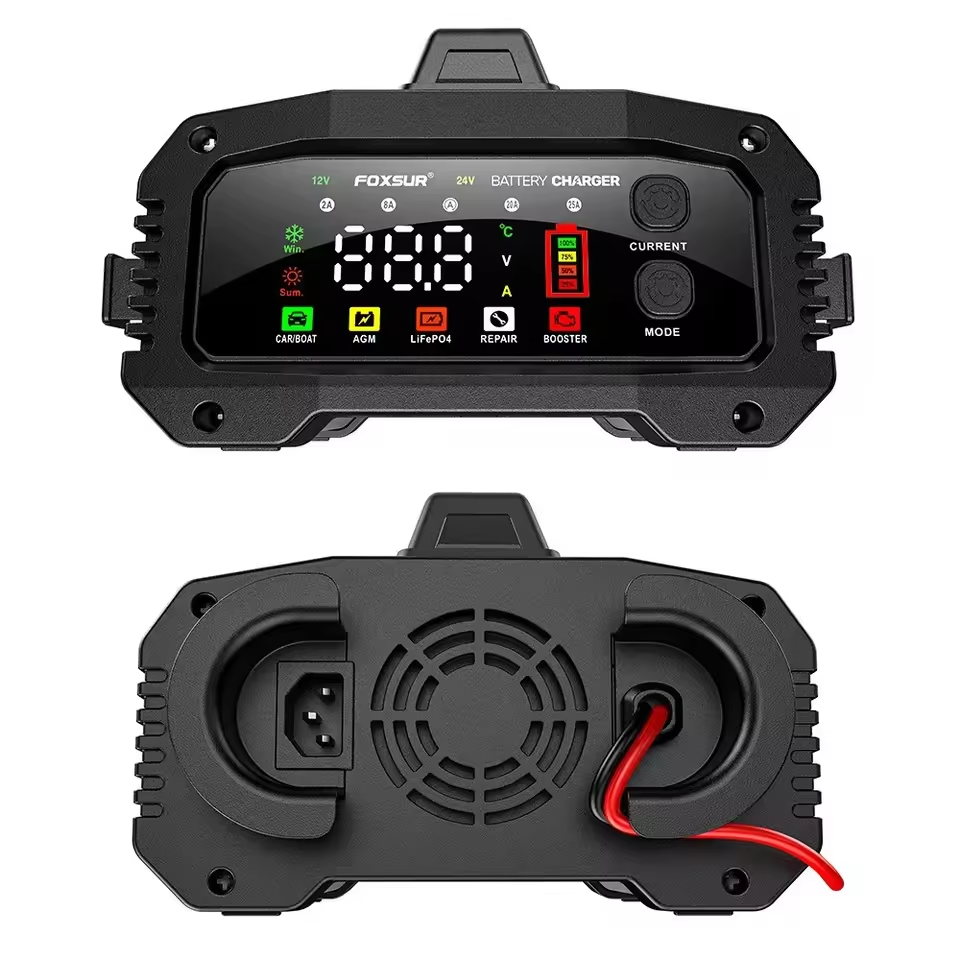
Maintenance and Care Tips for Your Motorcycle Jump Starter
Proper care extends the lifespan of your motorcycle jump starter, ensuring reliability during emergencies. Follow these tips:
1. Regular Cleaning
- Terminal Contacts: Use a dry cloth or soft brush to remove dirt from clamps and battery terminals.
- Body Exterior: Wipe with a damp cloth—avoid submerging the device.
2. Charge and Storage
- Recharge Intervals: Store the device at 40–60% charge if unused for months. Fully charge every 3–6 months to prevent “deep discharge” damage.
- Storage Environment: Keep it in a cool, dry place away from direct sunlight or extreme temperatures.
3. Pre-Use Checks
- Inspect cables for fraying or corrosion before trips.
- Test functionality annually by lightly powering a small LED light—this ensures internal cells are healthy.
4. Avoid Overuse During Single Sessions
- Limit jump attempts to 5–10 seconds per try. Prolonged cranking overheats the device.
- Wait 1–2 minutes between attempts to allow cooling.
5. Physical Protection
- Use the included protective case to prevent drops or impacts.
- Avoid exposing the device to water unless it’s explicitly labeled “IP67 waterproof.”
6. Know When to Replace
- Replace the starter if:
- It fails to deliver full amps after charging.
- The battery shows visible swelling or leaking.
- It’s over 3–5 years old (even if unused).
By following these practices, riders can ensure their motorcycle jump starter remains a trusted companion for years, ready to revive stranded bikes whenever needed.
Conclusion: Invest in Reliability for Every Ride
A motorcycle jump starter is more than a tool—it’s a safeguard against unpredictable road conditions. By prioritizing features like auto-sensing technology and portability, riders can turn emergencies into minor inconveniences. Whether you’re a daily commuter or an off-road enthusiast, investing in a high-quality motorcycle jump starter ensures you’re always prepared. Remember: A reliable device isn’t just about starting your bike—it’s about maintaining confidence and safety on every journey.